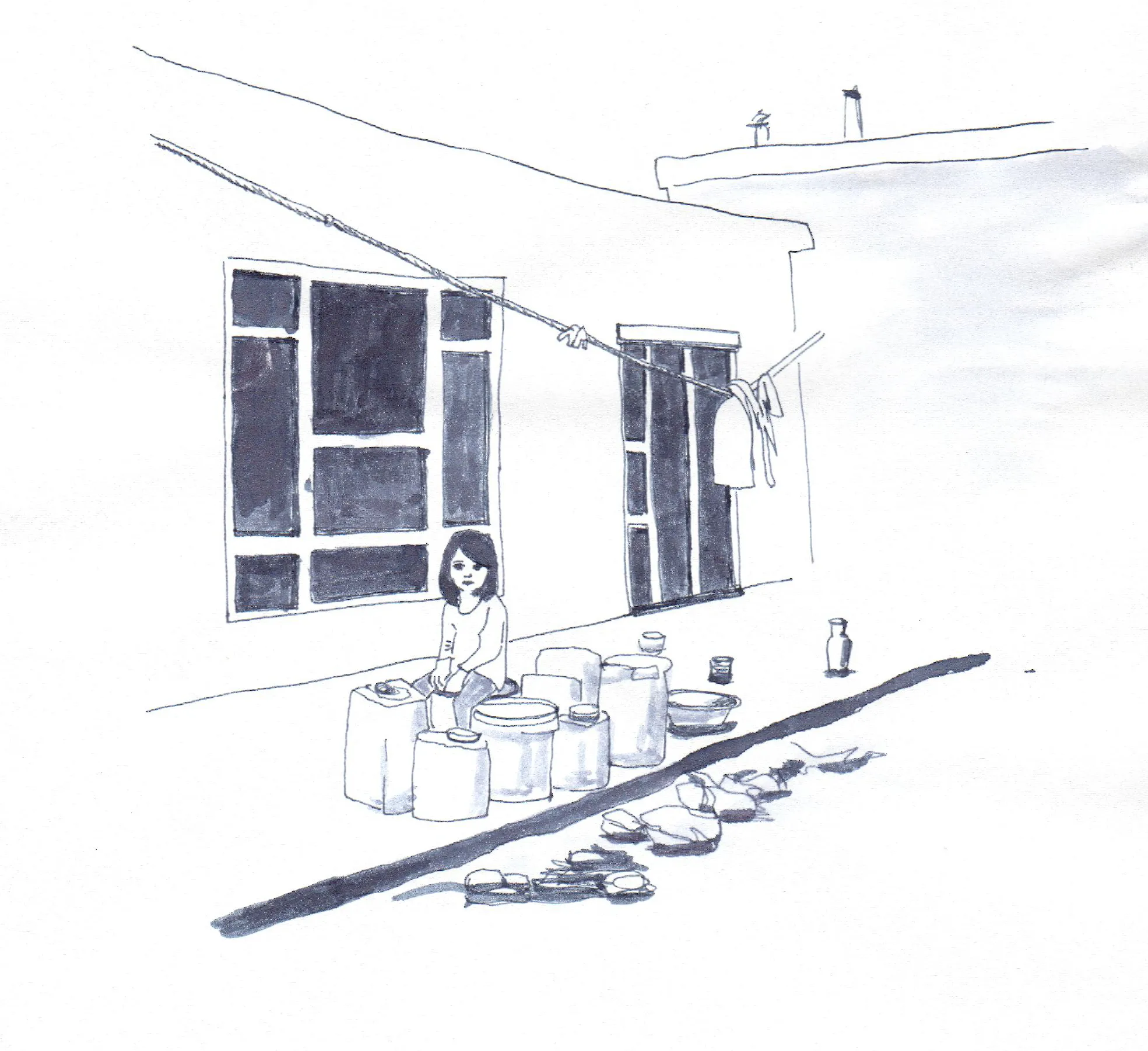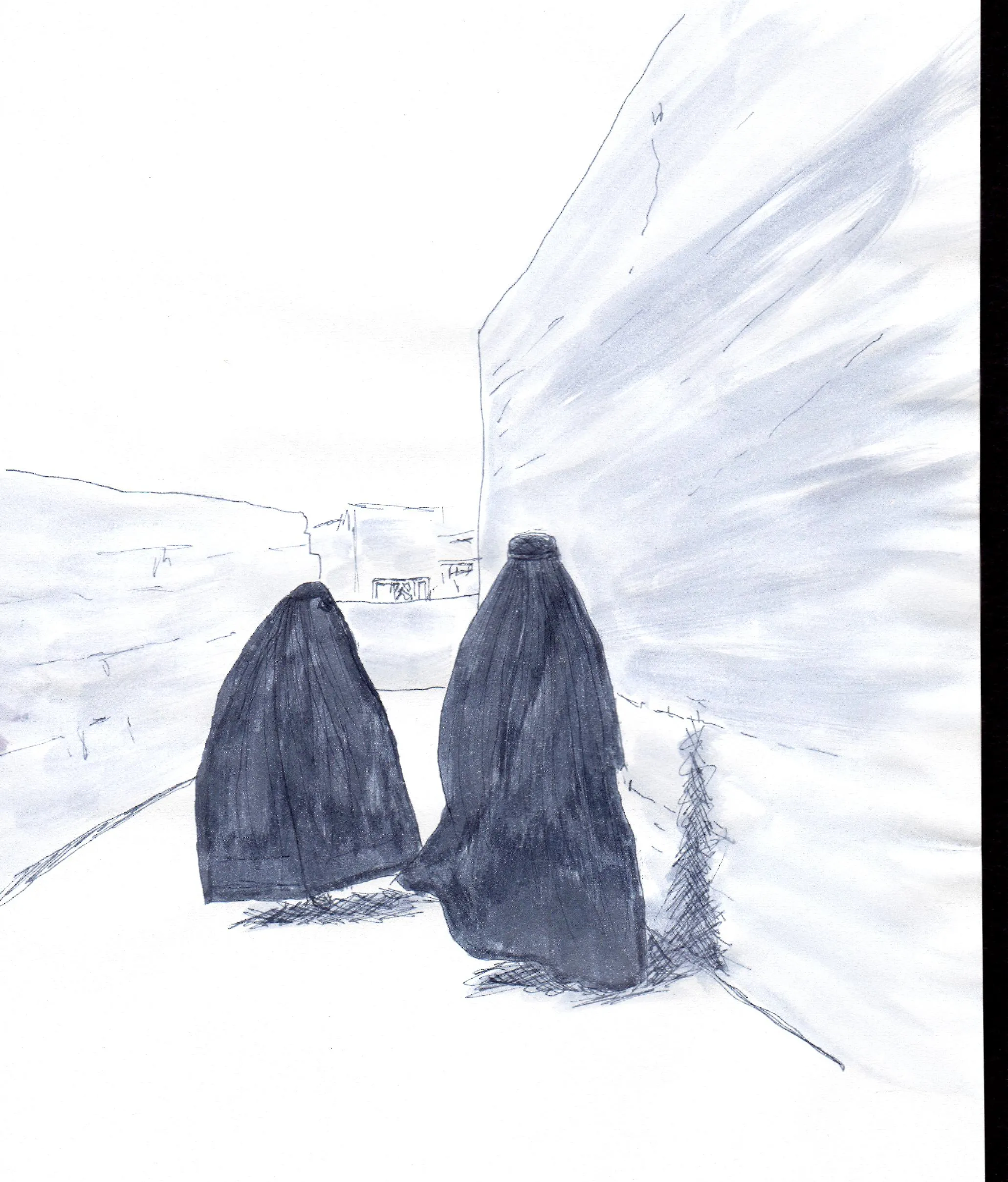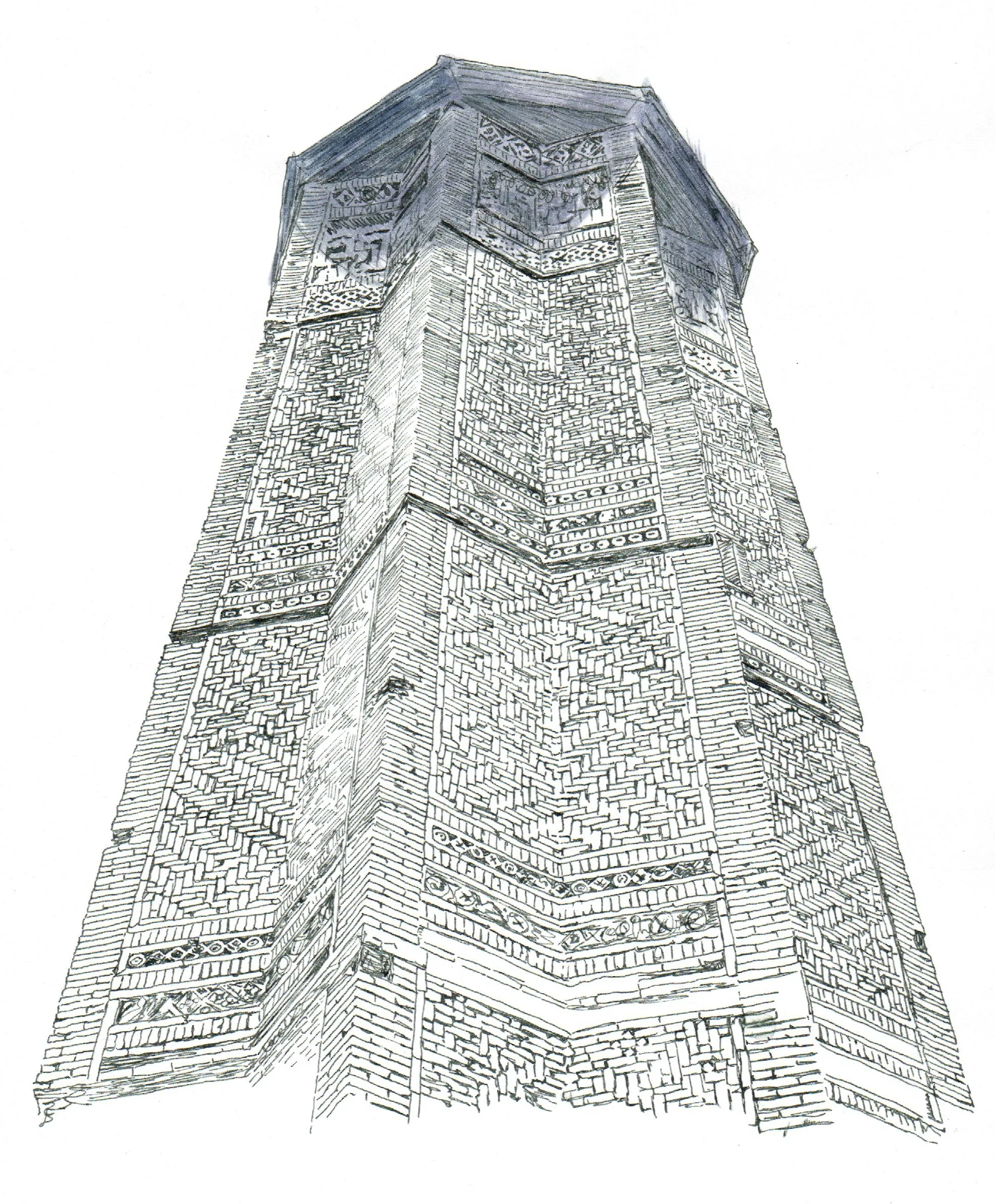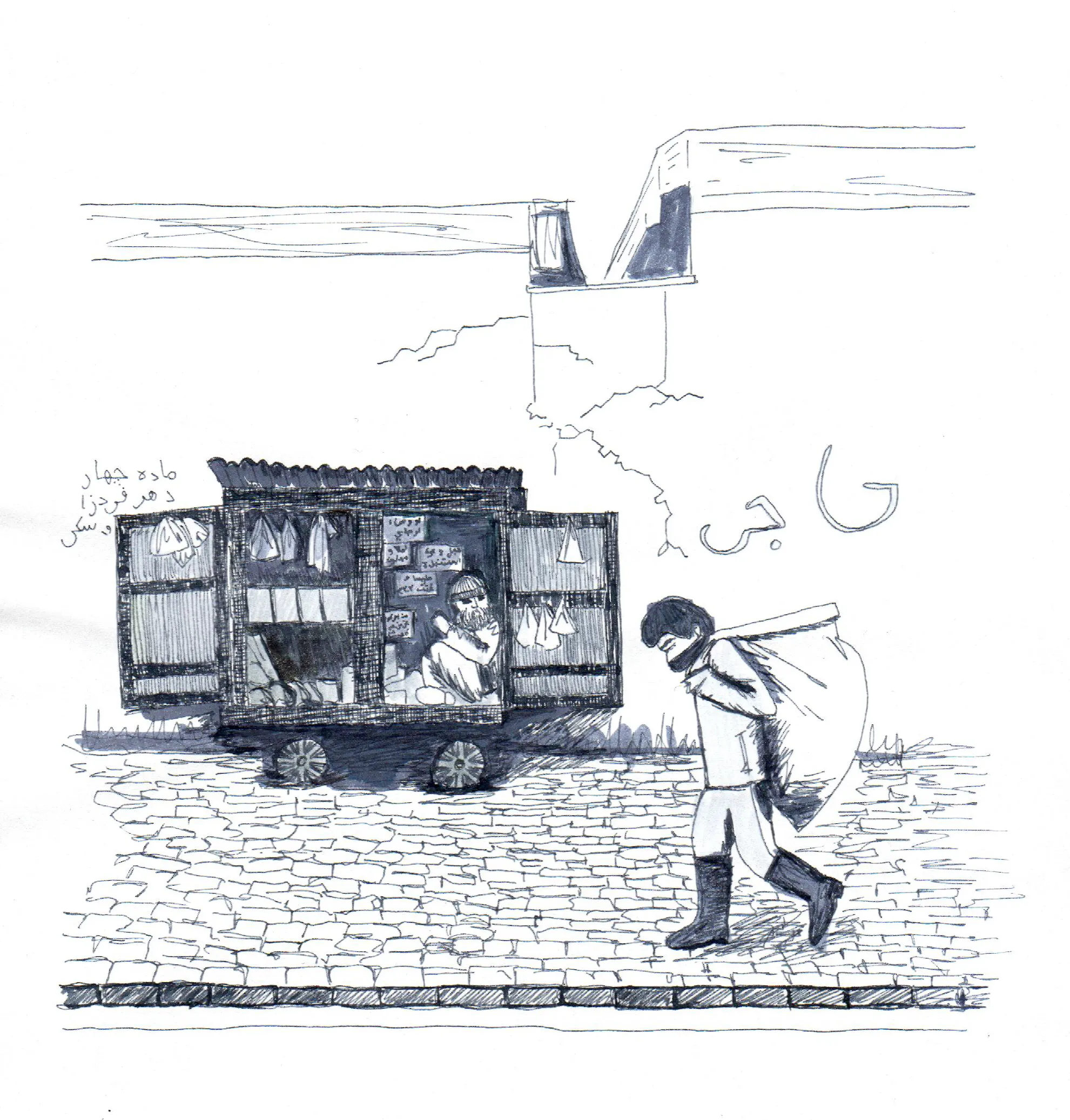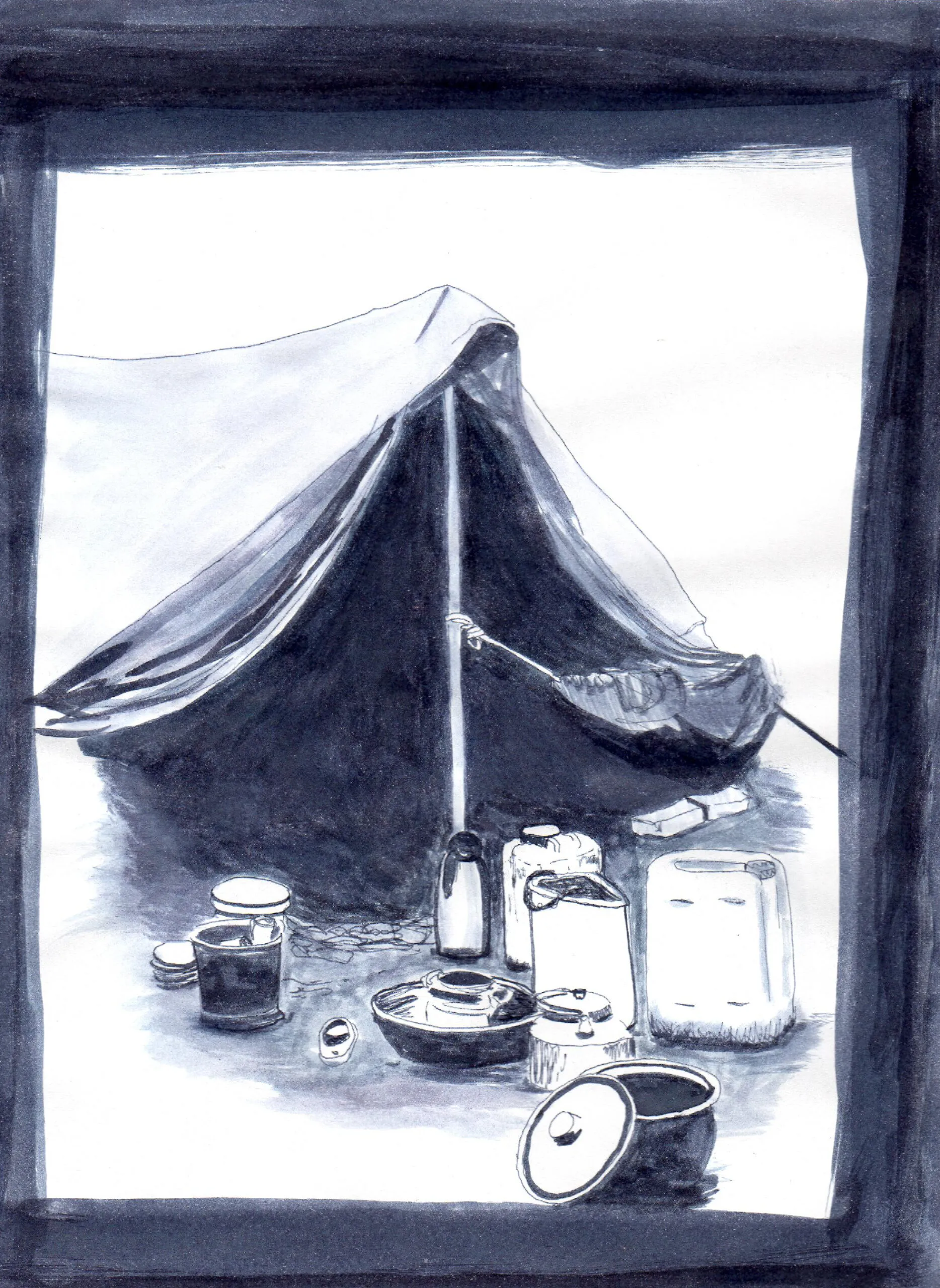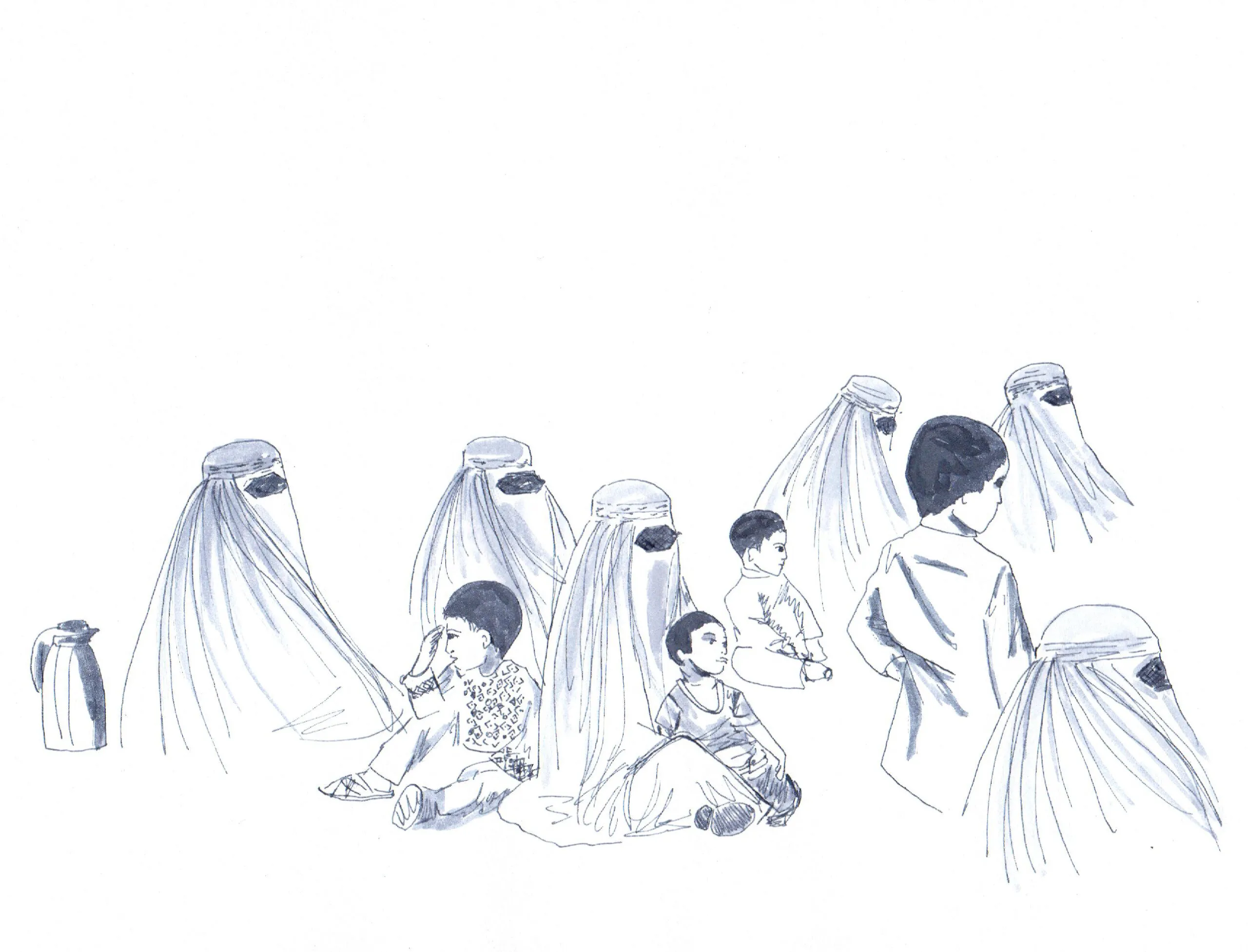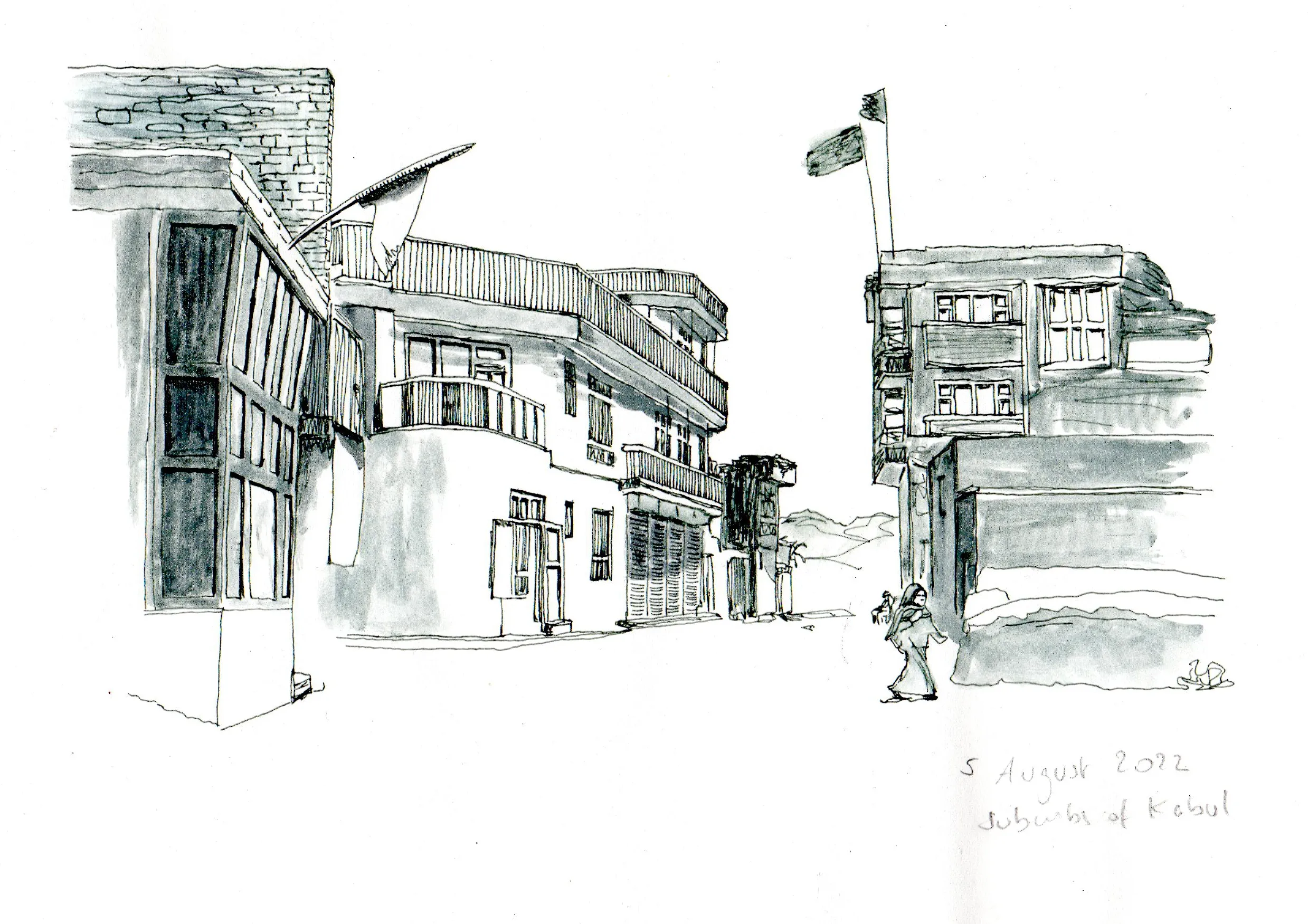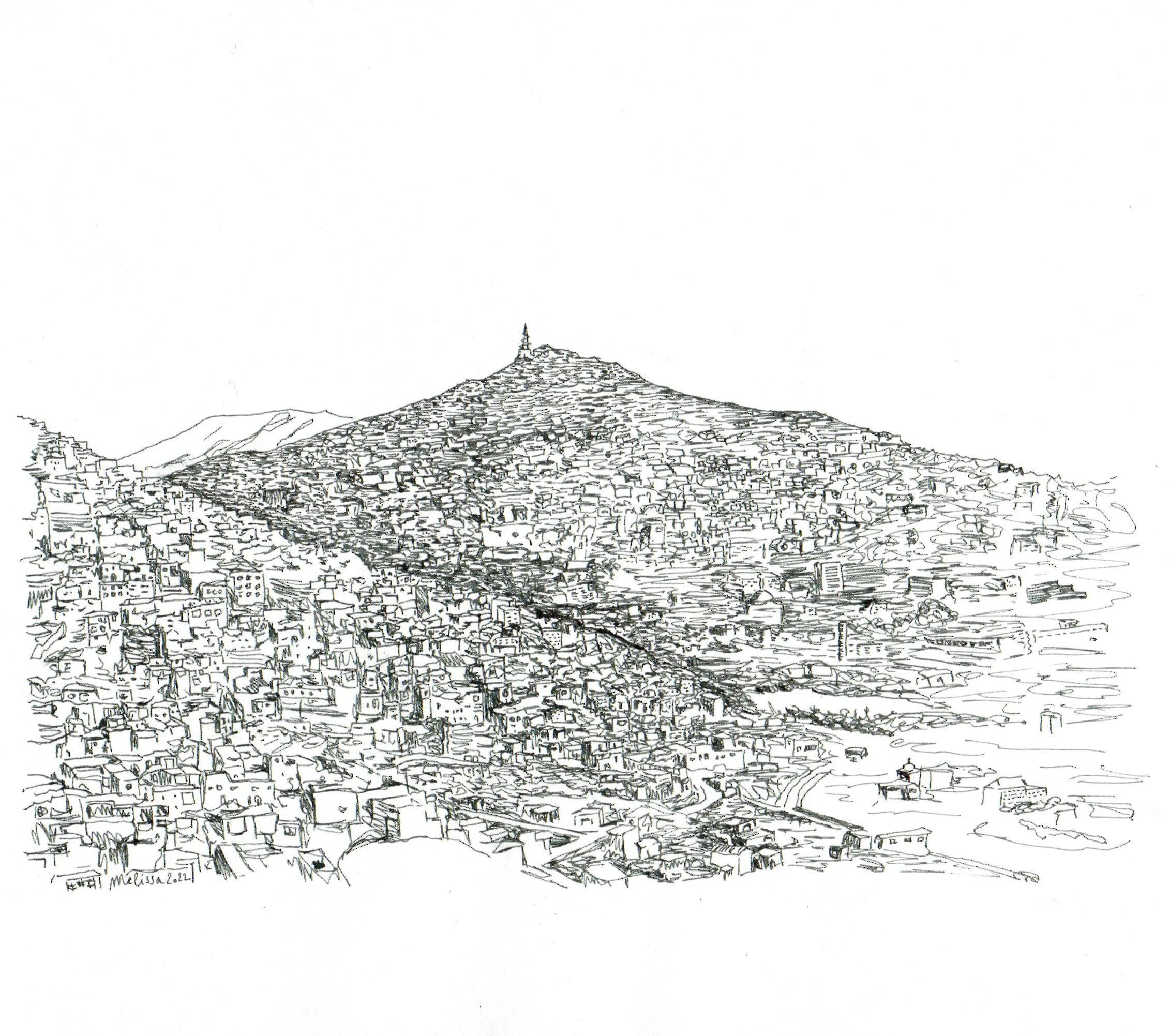There was no city power, and Mélissa didn’t have a generator of her own, so, like many others in Kabul that night, she had no heating or electricity.
Since the Taliban had come back into power four months earlier, there’d been a strict curfew in the city. She couldn’t leave her building or socialize with friends. She’d already read the five or six books she’d brought from home, and so, with nothing else to do, she did something she had not done since she was a child.
She picked up a pen and drew.
Having spent the last five years living in Kabul and working for different humanitarian groups, Mélissa was in a unique position. She’d lived in Kabul before the fall, and she was now back after the de facto takeover.
She was witnessing the changes in real time and, she realized, she could document this historic time through her art.
“Advocacy is hard. You have to get people to listen to things that they don’t care about,” Mélissa, who most recently has been CARE Afghanistan’s Advocacy Manager, says. “And when they’ve grown tired of the facts and figures, art is another way to reach people and show them what is happening inside the country.”
Below are excerpts from Mélissa’s sketchbook, along with brief descriptions of where she was and what she saw in her travels around the country.

